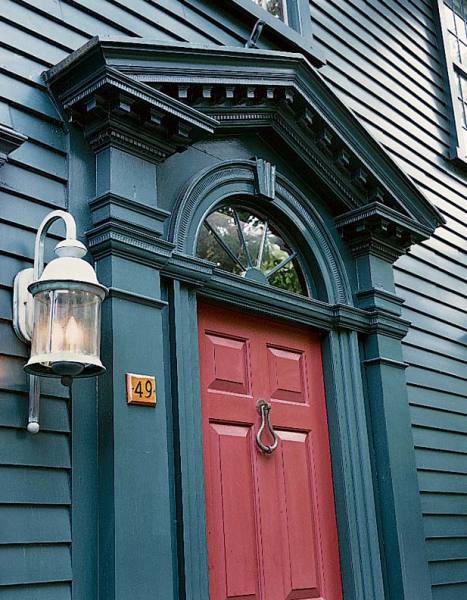
A richly colored Federal house in Newport, Rhode Island, has a contrasting scheme is in patriotic blue and red. (Photo: Eric Roth)
Picture a typical house of the colonial era, and imagine its exterior color. Chances are, the first thing that comes to mind is dark brown. Now do the same with a Colonial Revival house. Suddenly you’re envisioning a white house with dark green or black shutters. Yet as “classic” as these color combinations seem, things weren’t always quite so black and white (and brown).
The term “Colonial Revival” is itself a bit of a misnomer, as it refers to a grab-bag of styles that adapted architecture of the First Period colonial, Georgian, Federal, and Greek Revival eras—an astonishing range from ca. 1670 to 1850. Occasionally the revival houses were historically accurate copies; more often they mix and match elements from two or more styles. These sometimes-eclectic houses arrived at a time when premixed paint was readily available—in many colors. Nevertheless, revival houses looked to a real or imagined colonial past.
In early America, homeowners were limited in their paint choices. Ingredients were scarce, and imported pigments expensive. This often meant using locally mined earth pigments on frame pieces and trim only—leaving the wood or masonry body of the exterior untreated (thus the dark brown of weathered cedar or pine shingles). The colors derived from earth pigments—siennas, ochres, umbers—were rich and satisfying.
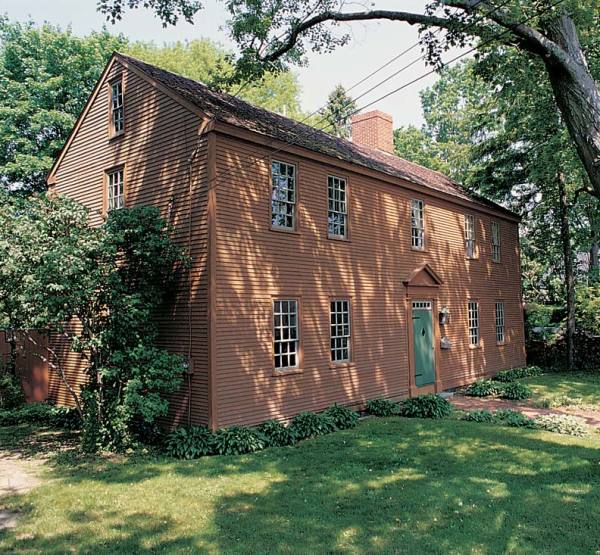
A 17th-century exterior is finished in earth-tone pigments typical of milk paint. (Photo: Sandy Agrafiotis)
On the other hand, sometimes these broad surfaces were treated to a coat of whitewash. Such treatments were applied to Saltbox and Cape Cod houses, among the most popular of the pre-1750 styles to find favor again during the Colonial Revival.
Around 1725, the fully painted exterior began to become more common. Earth pigments were mixed with lime, casein (milk protein), and linseed oil to treat outdoor surfaces. For today’s homeowners seeking authenticity in color and texture, simulated acrylic-latex milk paint is now sold for exterior use.
The 18th century also signaled the emergence of Georgian (1725–1780) architecture, with its weighty massing and bold classical details. By 1750, more than three dozen paint pigments were being imported from Europe, including the hugely popular Prussian Blue. Paint evidence suggests that some homes in the early Georgian period had very colorful exteriors—reds, oranges, and even (for those seeking status) a bright blue.
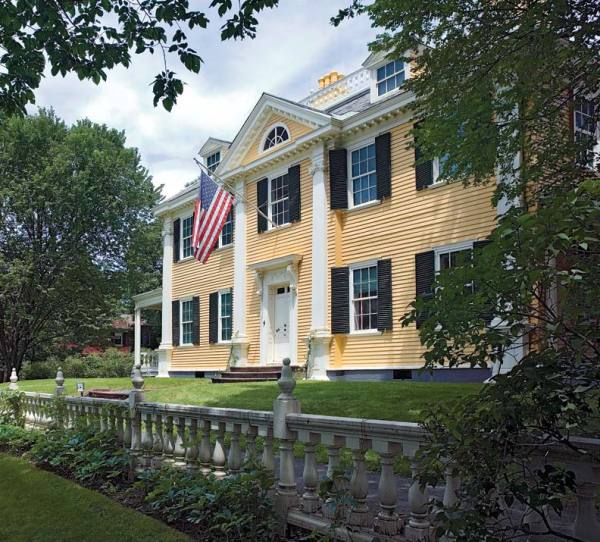
The Georgian-era Longfellow House’s pleasing combination of buttercup yellow, crisp white, and black with a hint of deep green would be appropriate for Colonial Revival exteriors, too. (Photo: Eric Roth)
What, you don’t fancy an orange exterior for your Georgian-informed Colonial Revival? Have no fear. In the second half of the 18th century, intense hues gave way to colors intended to mimic the look of stone. These more subdued yet sophisticated shades included granite-inspired light grays and blues, limestone-inspired yellow ochre, and marble-inspired white. This was the era in which doors began to be painted in dark shades—not black, but deep browns, blues, greens, or red. Trim was now being picked out in white.
After the Revolutionary War, popular taste shifted again, toward a lighter though still classically derived style of architecture. The Federal period (1780–1840) retained a dedication to those stone-color exteriors. Over time, though, they became even paler. Eventually, white houses began to dominate over even the delicately tinted exteriors.
Another shift came with the treatment of trim. On Georgian exteriors, the trim often was painted in contrast to the body. Now, only the doors and shutters were painted as an accent. In trim, too, the variety of colors began to dwindle, until the most popular became the ubiquitous dark green and black. Sound familiar? If these color combinations speak to you, you’re in good historical company.
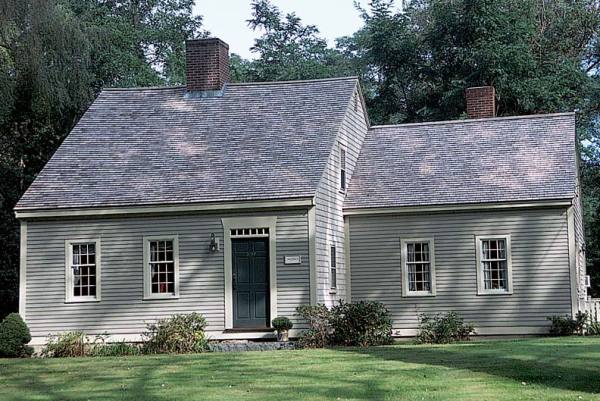
This palette of soothing greens on an 18th-century Cape Cod-style house works equally well on its 1930s addition at right. (Photo: Franklin & Esther Schmidt)
The penchant for white exteriors continued into the Greek Revival period (1825–1855), an allusion to the Greek temples of antiquity (their original polychromy long lost). Pale stone colors appeared in the off-white, yellow, and gray families. Light blues and gray-blues dropped away.
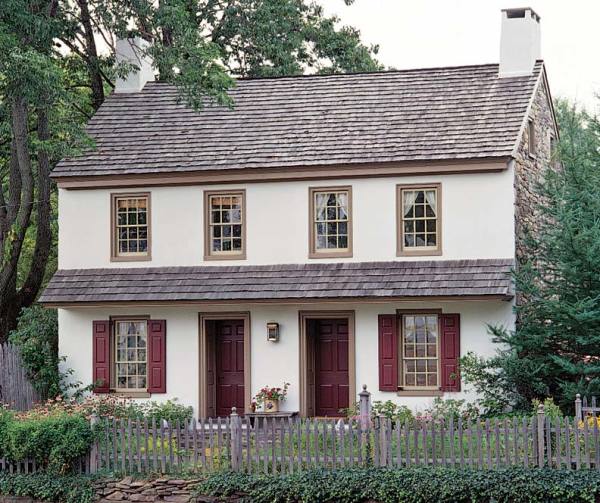
The whitewashed stucco on a circa 1790 stone house in Pennsylvania is accented by earthy browns and reds. (Photo: Gridley + Graves)
The most interesting development in this era was the treatment of trim. While window sash and frame were long painted the same color (whether picked out in white like Georgian, or the same as the body color in Federal), owners of Greek Revival homes generally painted their window sash dark green or black, a convention that would carry through into the Victorian era.
Given this wealth of historical precedent, what colors did the original owners of 20th-century Colonial Revivals paint their homes? For the body: white, off-white, yellow, gray, or the occasional pastel. Gray-blue and gray-green were also popular. Trim, including the sash, reverted to the Georgian treatment of contrasting a darker body with white or off-white. Shutters and doors remained dark. Still classic? Indeed.







